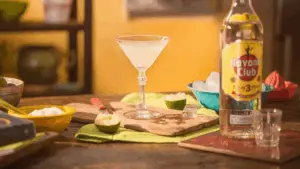Before we drive into the fact of Signature Garnishes: Cocktail culture has always been about more than recipes or spirits. It is also about the people who craft the drinks and the subtle ways they leave their mark. Few elements capture this better than the garnish. A twist of citrus, a cherry on a pick, or a sprig of mint can serve not just as decoration but as a bartender’s signature. These flourishes live in the memory of guests and help build a shared language between communities of drinkers and makers.
Signature Garnishes: Roots in the 19th Century
The tradition of garnishing cocktails stretches back to the 19th century. Jerry Thomas, often called the father of mixology, included garnishes as an essential element of his craft in How to Mix Drinks (1862). His punches, adorned with fruits and herbs, turned the bar into a stage. Guests came for the ritual of presentation as much as for the liquid itself, and garnishes became part of the spectacle that drew people together.
Signature Garnishes: Symbols of Identity
By the early 20th century, garnishes had become social markers. In New York and London, ordering a Manhattan with its cherry or a Martini with a lemon twist signaled belonging to an international cocktail community. The Old Fashioned, with citrus peel and cherry, carried similar weight in both private clubs and neighborhood taverns. Garnishes evolved into shorthand for identity and belonging, reflecting not just taste but also cultural alignment.
The Renaissance of Minimalism and Theater
The cocktail revival of the early 2000s redefined the role of garnishes. At Milk & Honey in New York, Sasha Petraske favored minimalism, using understated garnishes to reinforce restraint and precision. His style suggested that a single citrus peel could be enough to tell a story. On the other hand, venues like Nightjar in London and The Aviary in Chicago pushed garnishes toward theater, with elaborate flourishes designed to spark conversation and capture the camera lens. In both cases, garnishes extended beyond taste, shaping the cultural atmosphere of drinking.
Japan and the Ritual of Precision
In Japan, bartending elevated garnish into philosophy. Kazuo Ueda, famous for his hard shake technique in Tokyo, treated each twist of citrus as a form of choreography. For his guests, watching him garnish was as meaningful as tasting the drink. His approach embodied ritual, intimacy, and respect, demonstrating how bartending is as much about human connection as about spirits and ingredients. He is most important person when we talk about Signature Garnishes.
Cultural Signatures Across the Globe
Signature garnishes also reflect place and heritage. In Peru, the bitters atop a Pisco Sour have become a national symbol, instantly recognizable to locals and visitors alike. In Italy, the orange wedge in an Aperol Spritz embodies summer gatherings in piazzas from Venice to Rome. In Kentucky, the mint sprig of the Mint Julep is inseparable from the culture of the Derby. These examples show how garnishes bind cocktails to specific communities, rituals, and landscapes. A signature garnish is a unique, specific item used to decorate and enhance a food dish or drink, representing the creator’s style or brand.
The Indispensable Role of the Signature Garnishes in Cocktails
The signature garnishes are the final, essential element that transforms a cocktail. Far beyond mere decoration, it’s a critical tool that engages all the senses and solidifies a drink’s identity. It provides Multi-Sensory Enhancement, primarily through aroma. A flamed citrus peel or a clapped herb sprig releases essential oils, dramatically influencing the taste (as much as 70% of flavor is smell). Furthermore, a unique, well-executed garnish is a vital part of Branding and Identity. Signature garnishes makes the drink instantly Instagrammable, becoming a visual shorthand for the bar’s quality and philosophy, which is essential for building a community around great spirits. This small addition raises the Perceived Value and completes the artistic statement of the mixologist.
Modern Creativity and Sustainability
Today, bartenders use garnishes to express both creativity and responsibility. Some experiment with edible flowers, smoked herbs, or even dehydrated fruits to give drinks unique signatures. Others are rethinking garnishes with sustainability in mind, replacing disposable plastics and unnecessary excess with compostable or reusable elements. This shift reflects a broader awareness that cocktail culture must evolve without losing its artistry.
For the Barlist community, Signature Garnishes remind us that drinking is a shared experience. A garnish tells the guest they are welcome, that the drink was made with care, and that they are part of a tradition carried forward by generations of bartenders. In these small details, cocktail culture comes alive. A citrus twist or a sprig of mint is not just flavor or decoration, it is connection, identity, and memory—a signature that transforms a simple drink into a story.


